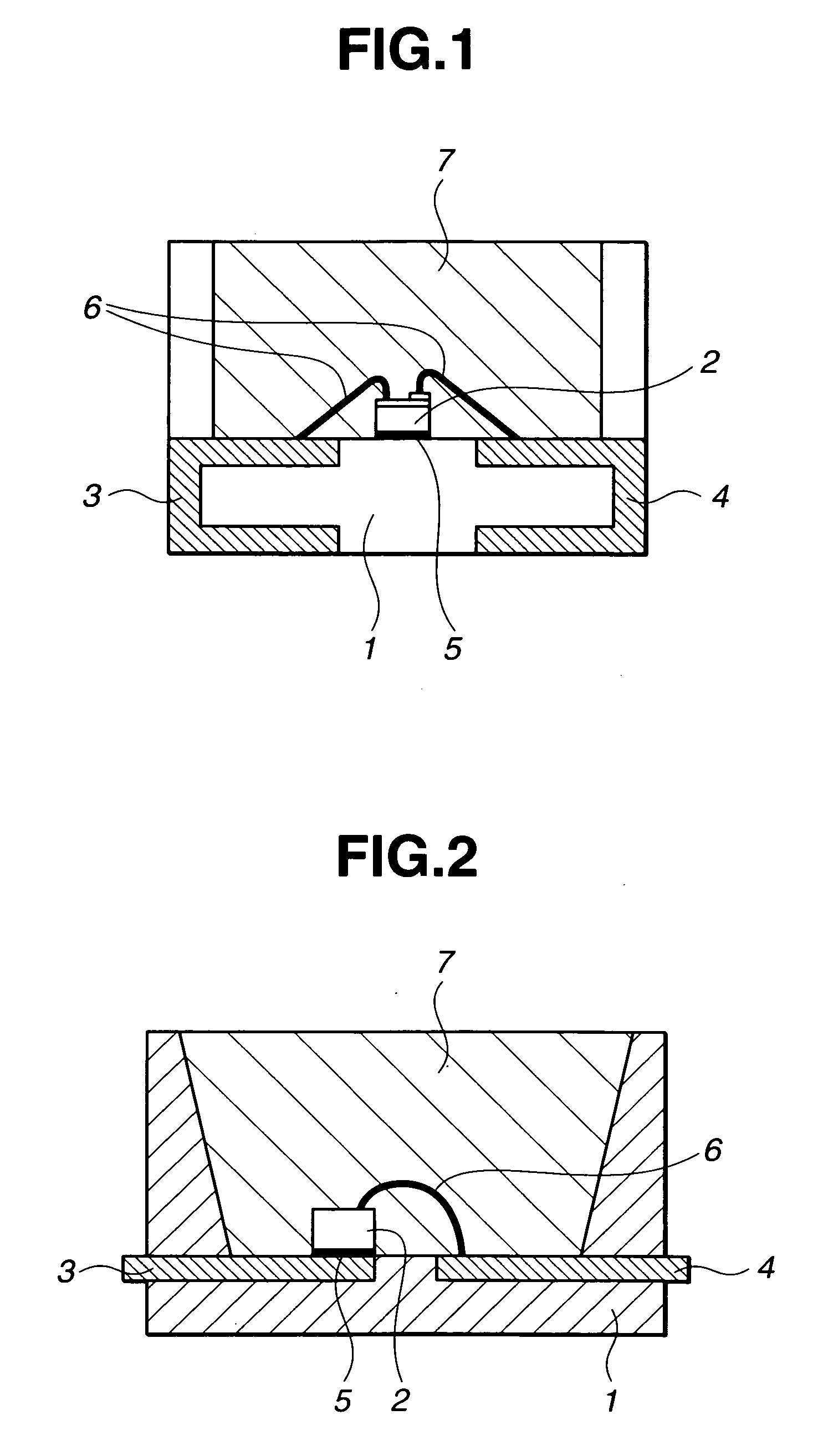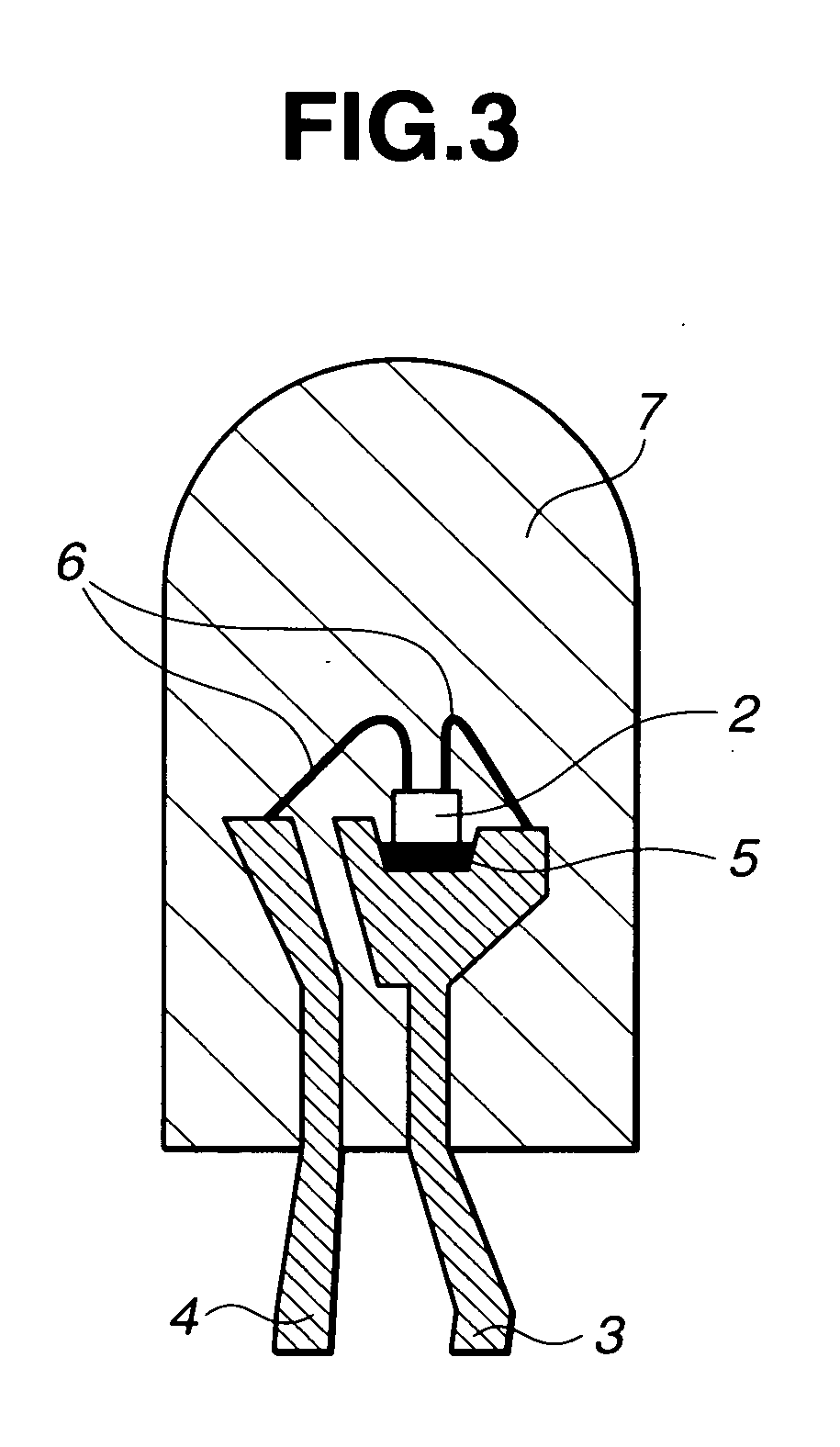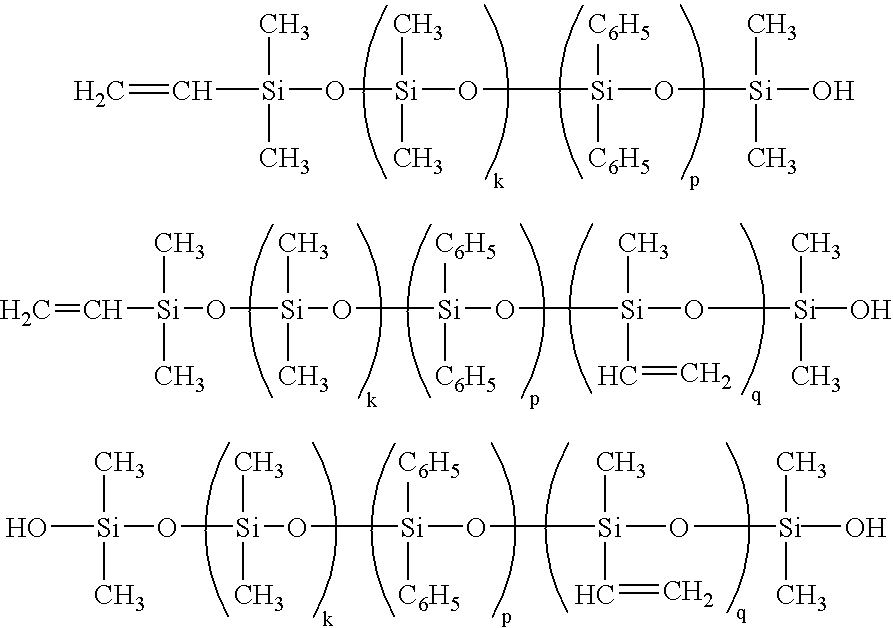Epoxy-silicone mixed resin composition and light-emitting semiconductor device
a technology of epoxy resin and mixed resin, which is applied in the direction of synthetic resin layered products, semiconductor lasers, transportation and packaging, etc., can solve the problems of poor light resistance, poor moisture resistance, and conventional transparent epoxy resin composition, and achieve good adhesiveness, light transmittance, and good adhesiveness.
- Summary
- Abstract
- Description
- Claims
- Application Information
AI Technical Summary
Benefits of technology
Problems solved by technology
Method used
Image
Examples
example 1
[0158] A curable resin composition which imparts a cured product having a refractive index of 1.51 at room temperature (25° C.) was prepared from the following components: [0159] 50 parts of organopolysiloxane represented by the following formula:
wherein, k=65, m=30, and n=2, [0160] 30 parts of organopolysiloxane having a weight-average molecular weight of 2,000 composed of siloxane units represented by (PhSiO3 / 2)0.6(MeSiO3 / 2)0.2(ViMeSiO2 / 2)0.2, in which the amount of hydroxyl groups bonded to silicon atoms is 8% by weight; [0161] 20 parts of bisphenol A epoxy resin, [0162] 5 parts of organohydrogenpolysiloxane represented by the following formula:
and [0163] 0.3 part of adhesion aid represented by the following formula:
[0164] On the other hand, a silicone gel composition was prepared from the following components: [0165] 100 parts of vinyl group-containing silicone oil represented by the following formula (a), in which SiVi accounts for 0.059 mol / 100 g:
wherein M=9 and N=1...
example 2
[0173] A curable resin composition was prepared from the following components: [0174] 80 parts of organopolysiloxane having a weight-average -molecular weight of 2,000 composed of siloxane units represented by (PhSiO3 / 2)0.6(MeSiO3 / 2)0.2(ViMeSiO2 / 2)0.2, in which 16 the amount of hydroxyl groups bonded to silicon atoms is 8% by weight, [0175] 20 parts of hydrogenated bisphenol A epoxy resin, [0176] 5 parts of organohydrogenpolysiloxane represented by the following formula: [0177] 0.3 parts of adhesion aid represented by the following formula:
[0178] On the other hand, a silicone gel composition was prepared from the following components: [0179] 100 parts of vinyl group-containing silicone oil represented by the same formula as in Example 1, in which SiVi accounts for 0.059 mol / 100 g, [0180] 19.5 parts of hydroxyl group-containing silicone oil represented by the same formula as in Example 1, in which SiH accounts for 0.0017 mol / g, and [0181] 0.02 parts of chloroplatinic acid octyl al...
example 3
[0187] The same procedure as in Example 2 was repeated except that the hydrogenated bisphenol A epoxy resin was replaced by hydrogenated biphenol epoxy resin. The resulting mixed resin composition was cured and the cured product (which was colorless transparent) was tested in the same way as in Example 2. The results are shown in Table 1.
[0188] This epoxy-silicone mixed resin composition was used to make a sample of light-emitting device.
PUM
| Property | Measurement | Unit |
|---|---|---|
| Fraction | aaaaa | aaaaa |
| Percent by mass | aaaaa | aaaaa |
| Percent by mass | aaaaa | aaaaa |
Abstract
Description
Claims
Application Information
 Login to View More
Login to View More - R&D
- Intellectual Property
- Life Sciences
- Materials
- Tech Scout
- Unparalleled Data Quality
- Higher Quality Content
- 60% Fewer Hallucinations
Browse by: Latest US Patents, China's latest patents, Technical Efficacy Thesaurus, Application Domain, Technology Topic, Popular Technical Reports.
© 2025 PatSnap. All rights reserved.Legal|Privacy policy|Modern Slavery Act Transparency Statement|Sitemap|About US| Contact US: help@patsnap.com



